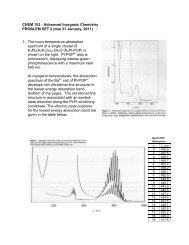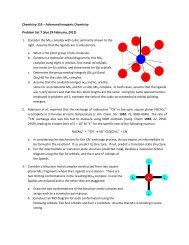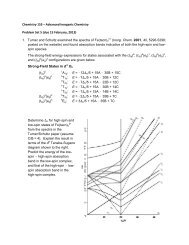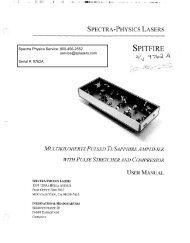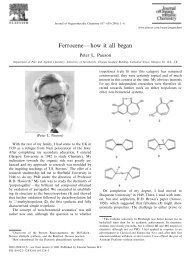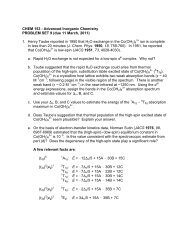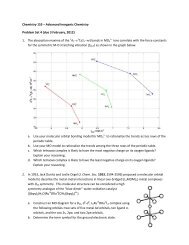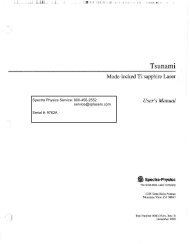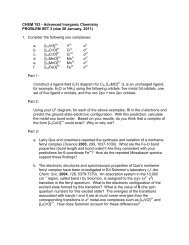NESLAB System III ystem III
NESLAB System III ystem III
NESLAB System III ystem III
You also want an ePaper? Increase the reach of your titles
YUMPU automatically turns print PDFs into web optimized ePapers that Google loves.
Electrical<br />
Requirements<br />
The unit construction provides protection against the risk of electric<br />
shock by grounding appropriate metal parts. The protection may not<br />
function unless the power cord is connected to a properly grounded<br />
outlet. It is the user's responsibility to assure a proper ground connection<br />
is provided.<br />
Refer to the serial number label on the rear of the unit for the specific<br />
electrical requirements of your unit.<br />
Ensure the voltage of the power source meets the specified voltage, ±10%.<br />
Voltage Selection<br />
Plumbing<br />
Requirements<br />
If the unit is to be operated from a 220 to 240V source, a voltage range selector<br />
switch inside the unit must be reset. See Maintenance and Service section for<br />
instructions on changing the voltage selector.<br />
Before installing the unit to an instrument that previously used tap water as a<br />
cooling fluid, flush the instrument several times to remove any rust or scale<br />
that has built up. The manufacturer of the instrument should be able to recommend<br />
a cleaning fluid for their equipment.<br />
The plumbing connections are located on the rear of the unit and are labelled<br />
FACILITY WATER and RECIRCULATING CLEAN FLUID. The top fittings are<br />
outlets and the bottom fittings are inlets.<br />
These connections are 1 inch FPT.<br />
A basket strainer is supplied with the unit to protect the heat exchanger from<br />
becoming clogged by dirty cooling water. Install this strainer on the FACILITY<br />
WATER inlet. A clogged strainer can adversely affect cooling capacity. See<br />
Section V, Facility Water Strainer for cleaning instructions.<br />
Connect the FACILITY WATER connections to the cooling water supply and<br />
the drain.Connect the RECIRCULATING CLEAN FLUID connections to the<br />
instrument being cooled.<br />
Flexible tubing, if used, should be of heavy wall or reinforced construction.<br />
All tubing should be rated to withstand 80 psi at +40°C. Make sure all tubing<br />
connections are securely clamped. Avoid running tubing near radiators, hot<br />
water pipes, etc. If substantial lengths of tubing are necessary, insulation<br />
may be required to prevent the loss of cooling capacity.<br />
- 9 -



